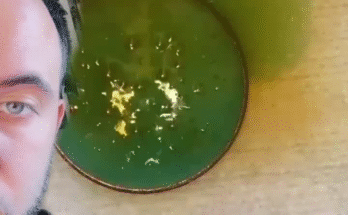
Penny Errors Worth Up to $500,000+
🪙 Not Every Penny Is Just a Penny!
Did you know some pennies in your pocket could be worth thousands—or even hundreds of thousands of dollars? 💎
From doubled dies to wrong metal planchets, these rare Lincoln cent errors have shocked collectors and turned spare change into small fortunes.
Here’s your easy step-by-step guide to the Top 10 most valuable penny errors you might still find in circulation today 👇
🔟 1999 Wide AM – ~💲500
🧐 What to Look For:
On the back (reverse) of the coin, the letters A and M in AMERICA are spaced apart instead of touching.
💡 Tip: Most 1999 pennies have the “Close AM,” so spotting a “Wide AM” can earn you a few hundred dollars!
9️⃣ 1992 Close AM – ~💲1,000
🧐 What to Look For:
The A and M in AMERICA are touching (opposite of the normal version).
🪙 Fun Fact: This was a transitional die error, making the 1992 Close AM extremely rare.
8️⃣ 1922 “No D” Mintmark – 💲1,500–💲2,000
🧐 What to Look For:
All 1922 cents were made in Denver, so every genuine coin should show a “D” mintmark.
If your penny has no “D”, you’ve found one of the most famous classic errors!
7️⃣ 1955 Double Die Obverse – 💲2,000–💲4,000
🧐 What to Look For:
Strong doubling on the date (1955), the word LIBERTY, and IN GOD WE TRUST.
📸 Collectors’ Favorite: This dramatic doubling is visible to the naked eye—no magnifying glass needed!
6️⃣ 1969-S Double Die Obverse – 💲30,000–💲50,000
🧐 What to Look For:
Bold doubling on the 1969, LIBERTY, and IN GOD WE TRUST.
⚠️ Note: Beware of counterfeits—only a few genuine examples exist, all with the “S” mintmark (San Francisco).
5️⃣ 1999 Mule Error – 💲75,000–💲100,000
🧐 What to Look For:
A mule error happens when mismatched dies are used. Look for faint extra letters around UNITED STATES OF AMERICA on the reverse.
💎 Extremely Rare: Less than a handful are confirmed by professional graders.
4️⃣ 2001-D Mule Error – 💲114,000
🧐 What to Look For:
A penny obverse (front) paired with a dime reverse design!
🤯 How It Happened: A mix-up at the Mint caused the wrong reverse die to be used during striking.
3️⃣ 1944 Steel Penny – 💲150,000+
🧐 What to Look For:
A silver-colored steel penny dated 1944.
Regular 1944 cents were made from copper, but a few leftover steel planchets were used by mistake.
⚡ Quick Test: Try a magnet—if it sticks, it’s steel (and potentially worth a fortune).
2️⃣ 1958 Double Die Wheat Penny – 💲336,000
🧐 What to Look For:
Bold doubling on LIBERTY and IN GOD WE TRUST, with minor doubling on the date.
📈 Market Note: This is one of the rarest known doubled dies, with just a few authenticated examples.
🥇 1️⃣ 1943 Bronze Penny – 💲500,000+
🧐 What to Look For:
A bronze (copper) penny dated 1943.
That year, all pennies were supposed to be made of steel, so any copper one is a minting mistake!
🔥 Fun Fact: One of these sold for over $1 million in a private auction.
💡 Quick Recap – Rarest Penny Errors & Their Values
| Rank | Year & Type | Value Range |
|---|---|---|
| 1️⃣ | 1943 Bronze Penny | 💲500,000+ |
| 2️⃣ | 1958 Double Die Wheat | 💲336,000 |
| 3️⃣ | 1944 Steel Penny | 💲150,000+ |
| 4️⃣ | 2001-D Mule Error | 💲114,000 |
| 5️⃣ | 1999 Mule Error | 💲75,000–💲100,000 |
| 6️⃣ | 1969-S Double Die | 💲30,000–💲50,000 |
| 7️⃣ | 1955 Double Die | 💲2,000–💲4,000 |
| 8️⃣ | 1922 “No D” | 💲1,500–💲2,000 |
| 9️⃣ | 1992 Close AM | 💲1,000 |
| 🔟 | 1999 Wide AM | 💲500 |
🛡️ How to Check & Protect Your Pennies
✅ Use a digital scale (to check weight)
✅ Try a magnet test for metal type
✅ Handle coins with cotton gloves
✅ Never clean your coins (reduces value)
✅ Submit rare finds to PCGS or NGC for grading
💬 Final Tip from Pennyverse.info
Next time you’re counting your loose change, take a closer look! 👀
That “ordinary” penny might just be your ticket to a $500,000 payday. 💵✨



Leave a Reply